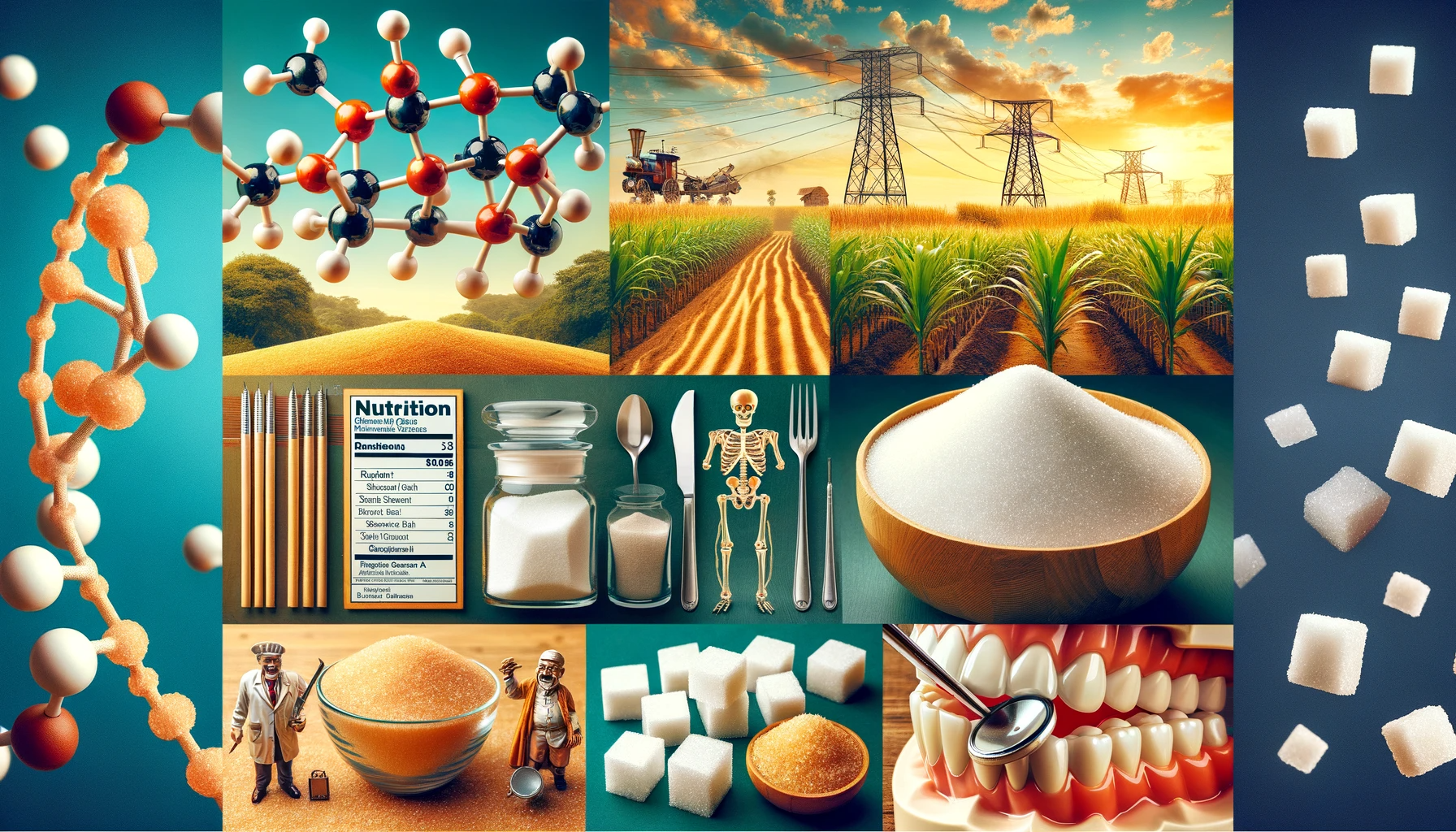Sugar is an integral part of the American diet, and its presence in various forms can be found in a wide range of food and beverages. While it undoubtedly adds sweetness to our favorite treats, it’s essential to understand the role of sugar in our diets and its potential impact on our health. In this article, we’ll delve into the various types of sugars commonly consumed in the United States and explore their significance as key ingredients.
Types of Sugar in the American Diet
1. Sucrose: The Common Table Sugar
Sucrose, often referred to as table sugar, is perhaps the most recognized type of sugar. It’s a disaccharide composed of glucose and fructose molecules, and it’s commonly used in households for sweetening coffee, tea, and baking. The consumption of sucrose has become a staple in American diets, contributing to the sweet taste we all love.
2. High-Fructose Corn Syrup (HFCS): A Widely Used Sweetener
High-Fructose Corn Syrup (HFCS) is another prevalent sugar in the American diet. It’s derived from corn and is used in a wide range of processed foods and beverages, including soda, condiments, and baked goods. HFCS is known for its affordability and ability to enhance flavor, but it has also been a subject of health concerns due to its high fructose content.
3. Glucose: The Body’s Preferred Energy Source
Glucose is a simple sugar that serves as the body’s primary source of energy. While naturally occurring in foods like fruits and vegetables, it’s also added to various processed foods to provide a quick energy boost. However, excessive consumption of glucose-rich foods can lead to spikes in blood sugar levels.
The Role of Sugar in Flavor Enhancement
Sugar plays a crucial role in the American diet by enhancing the flavor of a wide range of foods and beverages. It provides that irresistible sweetness that keeps us coming back for more. Whether it’s in the form of sucrose, HFCS, or glucose, sugar is a key ingredient that adds depth and richness to our favorite dishes.
Hidden Sugars in Processed Foods
1. The Sneaky Sugar in Condiments
Many condiments, such as ketchup, salad dressings, and barbecue sauce, contain hidden sugars in the form of HFCS. While they may not taste overtly sweet, these sugars are added to balance flavors and can contribute significantly to daily sugar intake.
2. Sugary Surprises in Breakfast Cereals
Breakfast cereals are often marketed as healthy options, but many of them are loaded with added sugars. These sugars can make a bowl of cereal taste delicious but can also lead to a sugar-packed start to your day.
3. Sweet Drinks: A Sugary Trap
Sugary beverages like soda, fruit juices, and sports drinks are some of the most obvious sources of added sugars in the American diet. Regular consumption of these drinks can lead to excessive calorie intake and various health issues.
Health Implications of Excessive Sugar Consumption
Excessive sugar consumption has been linked to various health problems, including:
1. Weight Gain and Obesity
High sugar intake can lead to weight gain and obesity, as sugary foods and drinks are often calorie-dense and can lead to overconsumption.
2. Type 2 Diabetes
Regularly consuming sugary foods and drinks can increase the risk of developing type 2 diabetes due to their impact on blood sugar levels.
3. Dental Issues
Sugar is a primary contributor to tooth decay and cavities when consumed in excess, particularly in sugary snacks and beverages.
4. Heart Health Concerns
A diet high in added sugars can raise the risk of heart disease by contributing to high blood pressure, inflammation, and elevated triglyceride levels.
Balancing Sugar in the American Diet
While sugar is undoubtedly a tasty ingredient, it’s crucial to consume it in moderation. Here are some tips for maintaining a balanced sugar intake:
1. Read Nutrition Labels
Be mindful of nutrition labels when shopping for packaged foods and drinks. Look for added sugars in the ingredient list and choose options with lower sugar content.
2. Cook at Home
Preparing meals at home allows you to have better control over the ingredients you use, reducing your reliance on added sugars.
3. Choose Natural Sweeteners
Opt for natural sweeteners like honey, maple syrup, or stevia when sweetening foods and beverages to reduce the reliance on refined sugars.
Conclusion
Sugar is undeniably a key ingredient in the American diet, but it’s essential to be aware of its various forms and potential impact on our health. By understanding the types of sugars we consume, recognizing hidden sugars in processed foods, and making conscious choices, we can strike a balance that allows us to enjoy the sweetness of life while prioritizing our well-being.
